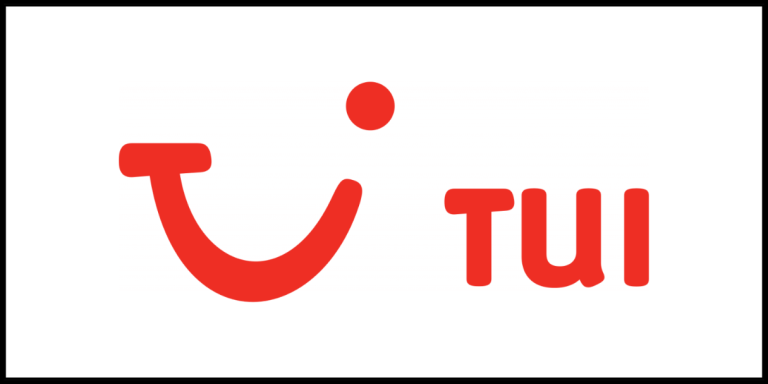
Content Menu
How to Build Cyber Resilience with a Diverse Cyber Workforce
You’re already navigating the relentless currents of AI innovation and escalating cyber threats. But a third, often overlooked, strategic imperative can be your ultimate defence: a diverse cyber workforce.
Cyber resilience is no longer just about firewalls and encryption. It’s about people. The human layer is both the greatest vulnerability and the strongest line of defence. Yet, the cyber workforce remains critically understaffed and strikingly homogeneous.
This isn’t just another soft skill discussion. This is about hard business risk and competitive advantage. If your AI and cyber security teams lack diverse perspectives, it’s not just a limitation – it’s a critical vulnerability.
The state of cyber security today
Cyber security leaders across industries are facing mounting challenges:
- Sophisticated cyber attacks that bypass traditional security controls.
- A growing attack surface due to cloud adoption, remote work, and IoT.
- A global cyber talent shortage is estimated at over four million professionals.
Traditional hiring practices and limited access to training have created a bottleneck that organisations can no longer afford. It’s time for a new approach.


Your vulnerabilities are exposed
Lack of a diverse cyber workforce isn’t just a moral issue – it’s a tactical vulnerability. Here are three types of challenges commonly caused by underrepresentation and uniform thinking:
1. Facial recognition bias
Several high-profile cases have highlighted how facial recognition systems, used by both law enforcement and private enterprises, have exhibited racial and gender biases. These flaws emerged largely because development and security testing teams lacked diversity and failed to anticipate these blind spots.
2. Phishing attack blindness
A global logistics company suffered a major breach through a phishing campaign targeted at non-English-speaking frontline workers. The cybersecurity team, composed largely of English-speaking professionals from similar academic backgrounds, failed to anticipate how the messaging could manipulate vulnerable employee groups across different regions.
3. Overlooked insider threats
In one healthcare organisation, insider threat patterns were missed because the cyber team operated with uniform assumptions about employee behavior. A more diverse team might have brought broader behavioural models and cultural perspectives that would have helped detect anomalies earlier.
These scenarios show how a lack of varied perspectives can allow blind spots to persist, making systems more vulnerable to both external and internal threats.
Why homogenous teams are a cyber liability
Unaddressed blind spots and emerging threats
Imagine a cyber security team where everyone shares similar academic backgrounds, cultural norms, and problem-solving frameworks. They’re excellent at identifying familiar threats, but may be blindsided by culturally nuanced attack patterns or novel social engineering tactics unfamiliar to their collective experience.
This isn’t a hypothetical risk. According to McKinsey, companies in the top quartile for racial and ethnic diversity are 35% more likely to outperform peers in financial returns. But in cyber security, the benefit goes beyond profit, it’s about protection. A diverse cyber workforce brings broader perspectives that strengthen defences and reduce the likelihood of missing critical threat vectors.
Studies also show that diverse teams make better decisions 87% of the time, a critical edge in high-stakes fields like AI and cyber, where a single decision can have cascading effects across months or even years.
Marks & Spencer (M&S), UK (April 2025)
During the Easter weekend of April 2025, M&S suffered a ransomware attack orchestrated by the “Scattered Spider” group. The attack forced the retailer to suspend contactless payments, pause click-and-collect and online orders, and halt hiring processes.
The breach exploited human vulnerabilities via a SIM-swap targeting a third-party helpdesk worker, compromising the personal data of up to 9.4 million customers. The financial damage is estimated at £300–400 million.
This case illustrates how attackers are evolving their strategies—and why defenders must, too. Homogeneous teams may struggle to anticipate culturally and operationally varied exploits, and it highlights the critical need for diverse cyber teams that can anticipate and defend against social engineering and third-party risks.
Medibank Private, Australia (2022)
In October 2022, Medibank Private, one of Australia’s largest private health insurers, suffered a significant data breach exposing the personal details of 9.7 million current and former customers.
The attack leveraged social engineering tactics targeting customer support channels. The breach spotlighted how limited workforce diversity, especially in security and customer-facing roles, contributed to vulnerabilities in recognising and responding to culturally nuanced attack methods.
Medibank has since overhauled its cyber talent strategy, emphasising diversity and inclusion to strengthen resilience.
Algorithmic bias in AI-driven security
As AI becomes more embedded in cyber defences – from threat detection to user authentication – the risk of algorithmic bias increases. AI models learn from the data they’re fed, and if those training datasets – and the teams creating them – lack diversity, the resulting systems can produce skewed results.
This can mean anything from prioritising the wrong alerts to failing to detect threats affecting marginalised or underrepresented groups. It’s not just a technical oversight, it’s a reputational and compliance risk waiting to happen.
Inclusive AI teams are better equipped to build models that are accurate, fair, and truly representative of the complexity of global user bases, helping organisations avoid catastrophic missteps and stay ahead of evolving threat landscapes.
Snowflake Breach, Global (2024)
Misconfigured Snowflake environments without multi-factor authentication were exploited in a 2024 cyberattack affecting over 160 organisations, including Santander Bank and Neiman Marcus. A broader set of perspectives might have questioned lax configurations and enforced stronger security controls.
Asda, UK (2025)
Facial recognition trials in five Greater Manchester Asda stores triggered over 5,000 complaints in April 2025. Privacy advocates raised alarms about algorithmic bias and the risks of misidentification. The incident revealed a need for diverse input when deploying surveillance technology in customer-facing roles.
Incomplete threat mapping
Cyber security isn’t just about tools, it’s also critical to understand behaviour. From phishing susceptibility to anomalous logins, attackers exploit gaps in human judgment. When cyber teams lack diversity, they’re more likely to miss how different user demographics engage with systems or how bad actors might exploit those patterns.
A diverse cyber workforce offers a kaleidoscope of insights drawn from a variety of cultural, linguistic, and socioeconomic backgrounds. This results in sharper detection of social engineering attempts, improved user profiling, and more adaptive defences.
NHS Phishing Scam, 2021
In late 2021, the NHS was targeted by a phishing campaign that compromised 139 internal email accounts. Over 1,100 credential-stealing emails were sent from legitimate NHS addresses, making them hard to detect. Featuring familiar branding and logos, the messages bypassed filters and remained active for months before being shut down.
This attack highlights the danger of incomplete threat mapping. While external threats are often prioritised, this case shows how compromised internal accounts can be just as damaging. Without a full view of all threat vectors—including insider risks—organisations leave critical gaps in their defences.
Darktrace, 2024
In March 2024, Darktrace detected a sophisticated phishing campaign targeting a global organisation via non-English emails sent from legitimate-looking domains (a Chinese fast-food chain’s Singapore domain). The emails featured Chinese filenames, QR-code payloads, and domain names crafted to bypass standard English-centered detection systems.
They slipped past conventional filters—yet Darktrace’s behavioral AI, which recognizes unusual patterns rather than relying on language, raised the alarm.
The case for diversity in cyber
Cyber security is a field where diversity isn’t just a value—it’s a strategy. Diverse teams are more innovative, better at problem-solving, and more reflective of the global threat landscape they defend against.
Here’s why diversity drives cyber resilience:
- Different perspective, better detection: Attackers think outside the box. Defenders need to do the same. A homogenous team may miss blind spots that a more diverse team would catch.
- Empathy leads to better design: Understanding a range of users and attackers allows teams to build more user-centric and robust security systems.
- Retention and culture: A more inclusive cyber workforce leads to stronger culture, lower attrition, and more loyalty—a major asset in a high-turnover sector.


Building your diverse cyber workforce
The talent gap in cybersecurity and AI is well-documented, but the solution isn’t just to hire senior experts. It’s about strategically growing diverse talent pipelines and creating pathways for untapped potential.
At Code First Girls, we’ve trained tens of thousands of women in tech, and at Code First Teams, we bring that expertise into corporate environments to upskill and reskill employees.
Based on our experience working with companies across sectors and helping to create diverse and inclusive teams, here are practical strategies for cyber leaders on how you can build a resilient, future-proof workforce:
Invest in alternative tech-talent pipelines
Head of Client Success, Helen Cleary says “Traditional recruitment limits you to a narrow pool. Our programmes are specifically designed to tap into talent pools beyond conventional computer science routes. By equipping individuals from non-tech backgrounds and career switchers with the skills to enter the industry, you inject fresh perspectives and inherent diversity into your tech teams from day one”
Reskill and upskill your internal talent
Our Head of Programmes, Fran Childs, outlines how “the advance of AI means job roles are shifting, disproportionately impacting certain demographics. This is happening particularly to women. Instead of looking solely externally, identify employees whose roles may evolve and provide them with the opportunity to reskill into critical AI and cybersecurity functions. This not only bridges your skills gap with trusted internal talent but also unlocks a diverse pool of individuals who already understand your organisational culture and goals. You’ve already invested in them; leveraging that potential makes strategic sense!”
Reskill and upskill your internal talent
“When permanent hiring isn’t possible, find diverse consultants through programs like Recruit-Train-Deploy. This allows you to rapidly onboard diverse expertise and benefit from varied perspectives without a long-term commitment” says Commercial Partnerships Manager, Rose Klaus
Shift your hiring paradigm
Senior Client Success Manager, Patricia Perez Simpson, explains there is a need to “move your focus to hiring on potential instead of credentials. Implement skills-based assessments over traditional CV screening. Try out blind recruitment practices and use diverse interview panels to mitigate unconscious bias. Open your doors to a wider range of candidates who possess the innate problem-solving abilities critical for cyber defence.”
Call to action: Steps to take today
A truly cyber-resilient organisation doesn’t just have the latest tech stack, it has a workforce that reflects the world it protects.
That means talent from different ethnicities, genders, regions, academic backgrounds, and lived experiences. It means teams that are equipped not just with technical knowledge, but with adaptability, creativity, and strategic thinking.
Here are steps your organisation can take today to build smarter, safer, more inclusive tech teams:
- Conduct a diversity & skills audit: Get a clear picture of your current team composition. Identify existing skill gaps and areas where representation is lacking.
- Rethink recruitment strategies: Actively seek out and engage with non-traditional talent sources and programmes designed to bring diverse individuals into tech.
- Launch targeted upskilling programs: Invest in your existing workforce. Provide accessible pathways for employees to gain AI and cybersecurity competencies.
- Cultivate an inclusive culture: Ensure your workplace actively solicits and values all voices in critical discussions, from threat modelling and ethical AI design. Psychological safety is paramount for diverse teams to truly thrive.
The future depends on who builds it
The future of business will be shaped by AI and cybersecurity. Cyber threats will keep evolving. The only sustainable way to build resilience is to evolve faster. Organisations that strategically build diverse, forward-thinking teams will gain a crucial edge. Tackling increasingly complex threats demands more than just advanced tools; it requires a wide range of experiences and ideas only diverse teams can offer.



















